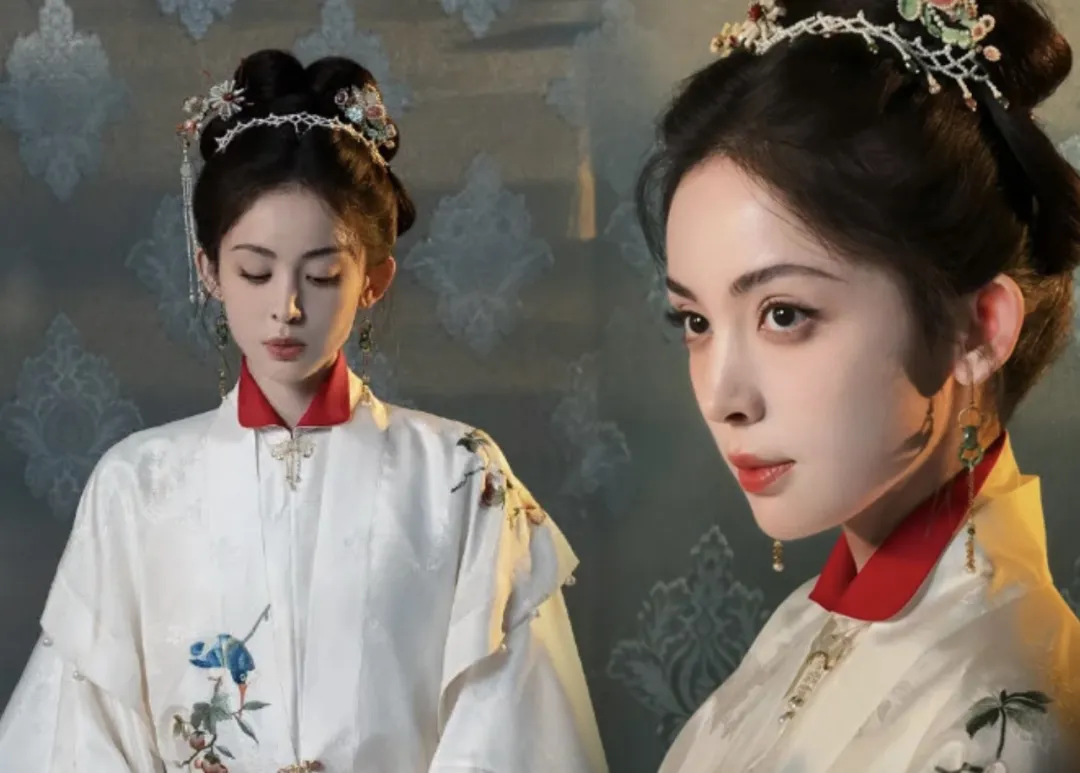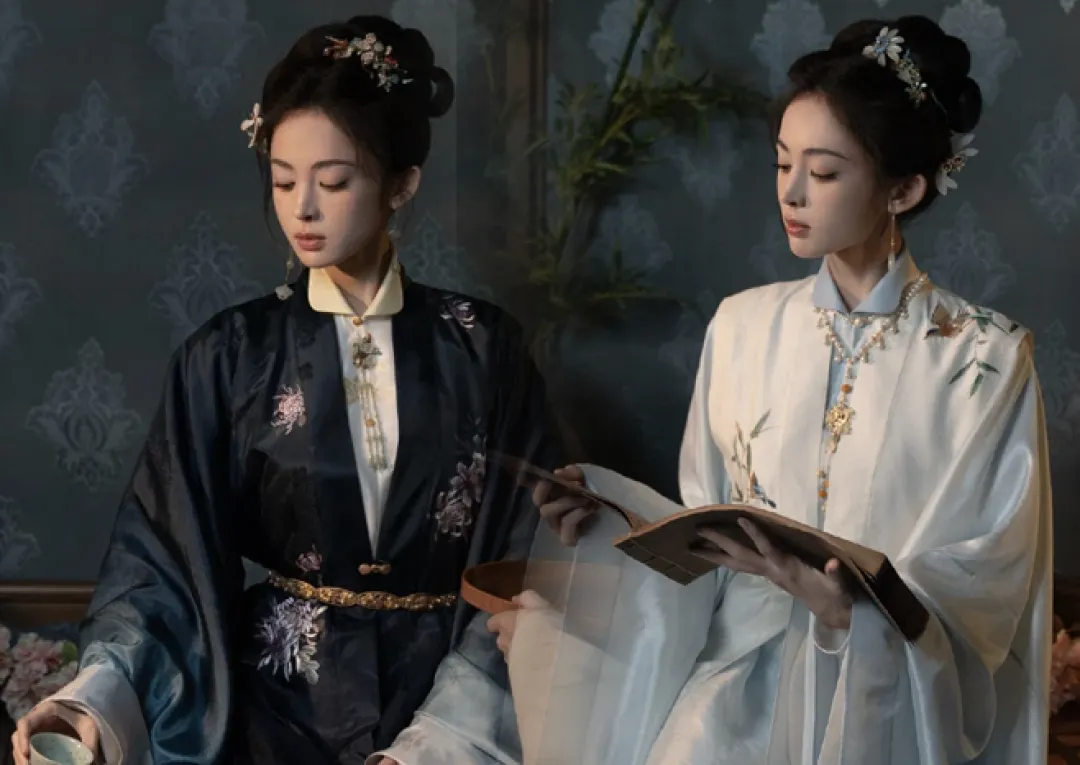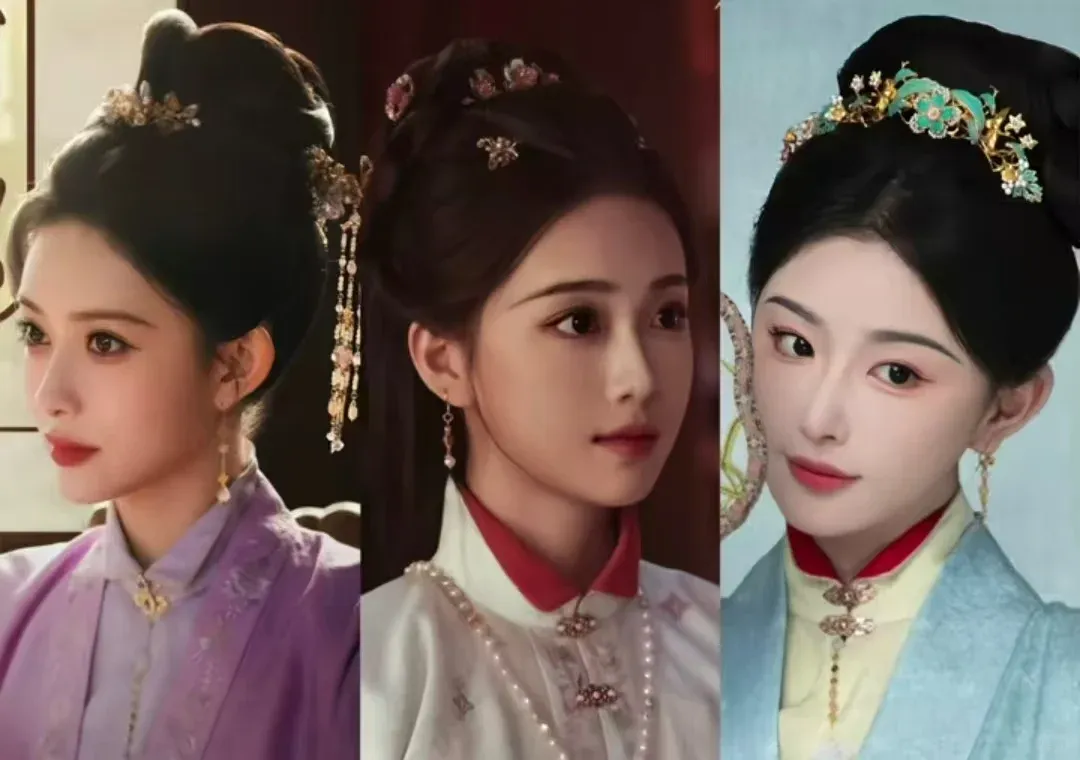
Recently, stills of Guli Nazha wearing Hanfu were released. Netizens noticed the trendy collar - turning style. Did the Chinese in the Ming Dynasty already have polo shirts? Let's start with the conclusion. It's an adjusted way of wearing a standing collar. Some previously criticized Ming - style Hanfu for not showing the neck well and making the face look bigger. This collar - turning method is a great solution. It offers more styling options and allows better ventilation in summer by unbuttoning the collar, killing two birds with one stone.
The Ming Dynasty was a period when 'polo - shirt - style' clothing was very popular. A short - sleeved standing - collar diagonal - closure shirt was unearthed from a Ming tomb. The small white folded collars in ancient paintings might be the effect of wearing such short garments underneath. I initially speculate this short garment meets key criteria for innerwear: it's plain or light - colored, versatile for pairing with outerwear; it uses ties instead of buttons, not interfering with the outer layer.

Recall our previous explanation about the Tang Dynasty's round - collar robes. Their innerwear was often half - sleeved. This shows why innerwear often has half - sleeves: to regulate body temperature in hot weather and to layer under outerwear for body contouring.
Not just innerwear, even formal outerwear can have turned collars. Guli Nazha's standing - collar shirt in the new drama mostly has a turned - collar style. It avoids wrapping the whole neck, making the face look smaller and adding a fashionable touch. It also reveals the collar lining's color by simply unbuttoning and folding the collar outward. It looks just like modern shirt collar - turning.
Many historical dramas have similar collar - turning styles with similar effects. It breaks the monotony of traditional attire and accentuates facial contours without making the neck look short. Typically, the collar lining matches the garment's color, often white, but contrasting colors like red can add a pop to a plain outfit.
There are several ways to turn a standing collar, likely adjusted for different occasions. Common styles include the big turn, the corner fold, and the edge fold. The big turn flips half the collar outward, creating a triangular effect; the corner fold flips a small corner slightly; the edge fold is more formal, folding the collar neatly along the edge to align with the neckline. The first style is more casual, while the latter two are slightly more formal. Even with turned collars, the degree of turning, fold angle, and color coordination can vary.
While there's much speculation about collar - turning styles, we can appreciate the charm of Ming Dynasty collar fashion. A small collar can create different styles through simple adjustments and be tailored to face shapes and occasions. Next time someone questions our ancestors' trendiness, just say: Polo shirts? The Ming Dynasty had them already. It's not ahead of its time; we just know too little about historical clothing culture.

